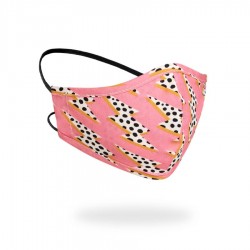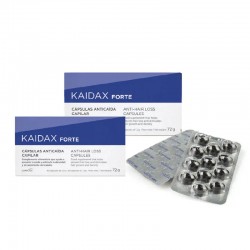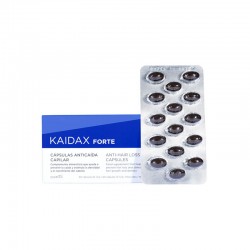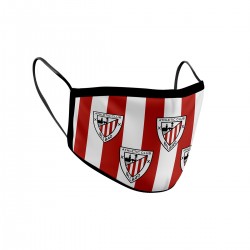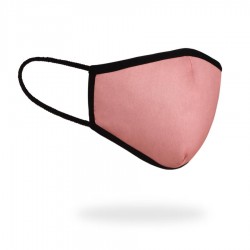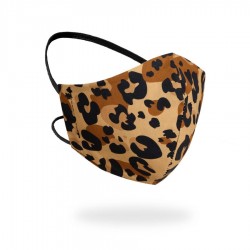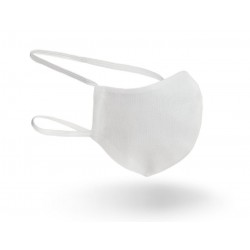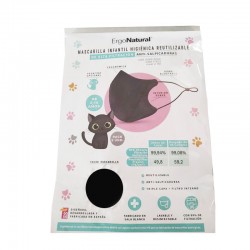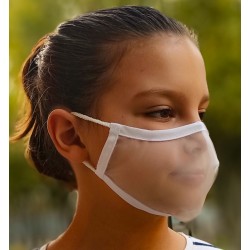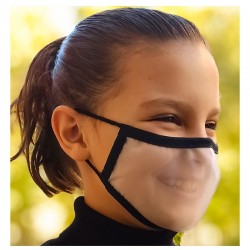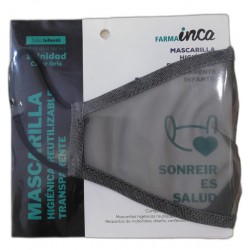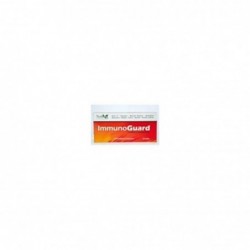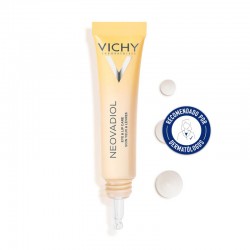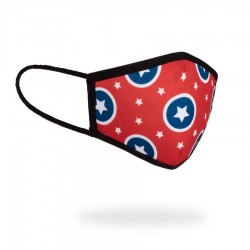Masks
Reusable and Washable Children's Mask 100% Organic Cotton 13-17 years R40
- -13.34%
- -16.74%
Transparent Reusable Mask Certified Eco-Repellent Color Black Size S - BEYFE
- -12.28%
Transparent Reusable Mask for Children (7-12 years) Gray Color 1 Mask - INCA
- -5.29%
- -5.9%
Protective masks at Farma2Go
Antibacterial protection masks that filter the air to prevent us from coming into contact with particles that are harmful to our health and that of those around us, such as viruses or pathogens, when breathing or speaking.
At Farma2Go you can find a wide variety of masks, of all types, sizes and formats, to adapt to the ideal use of each person. Non-reusable surgical masks, comfortable and easy to breathe, and various sizes for children and adults, for sale in individual format, packs of 5, boxes of 50, 100... We also have FFP2 and KN95 masks, personal protective equipment that filter more than 95% of suspended particles in the air, protecting very safely from bacteria, viruses, fungal spores, liquid or solid aerosols. Likewise, we have reusable ecological masks, which can withstand 40 washes and ironing, in different formats, colors and designs, to guarantee your safety on any occasion and place.
We always accompany the sheet of our protective mask products with their relevant certificates and control tests, to guarantee our customers that the products they buy are perfectly approved and categorized for use.
Types of masks
If you are looking to protect yourself from viruses, we can help you by passing on some of the recommendations that health authorities have made on this matter:
Hygienic masks: recommended for healthy people without contact with viruses, always together with the physical distancing and hygiene recommendations of the Ministry of Health.
Surgical masks: for people who have been infected, who have symptoms or who are asymptomatic positive.
PPE masks (FFP1, FFP2-KN95, FFP3): people who care for or are in contact with symptomatic or disease-positive people, people in contact with viruses, for vulnerable groups.
How do you put on a mask?
- Avoid touching the inside of the mask.
- Adjust the elastic band around your ears until you are in a comfortable position.
- Adjust the external face of the mask to the structure of the face until it is well deployed and sealed.
- Adjust the nose clip with both hands until it fits firmly on your nose.
- Change the mask if it is wet, damaged or if you have breathing difficulties.
The effectiveness of protection will depend largely on proper handling and use.

It is recommended that adults supervise the placement, use and removal of the mask in children.
How do I know if my FFP2 or surgical mask has graphene?
To identify if a mask contains graphene, simply check the packaging of the mask package , where the composition is broken down. If the word graphene appears, its use is discouraged by Health.
What are the masks with graphene removed from the market by the AEMPS?
The mask models recalled due to their Graphene content by the AEMPS are the following:
- Disposable IIR graphene and biomass surgical mask from the manufacturer Shandong Shengquan distributed by Amevisa SAU
- FFP2 Healfiber mask from the same manufacturer and distributed by Iturri SA
At Farma2Go WE DO NOT MARKET ANY OF THESE MASKS
The Spanish Agency for Medicines and Health Products (AEMPS) has started an investigation into the risk posed by inhalation of these nanoparticles due to lung toxicity.
General recommendations
Protective masks are a fundamental element to protect health and prevent infections and the spread of viruses , but in no case does their use replace strict monitoring of other protection and hygiene measures recommended for the prevention of infection, as can be social distancing or proper hygiene.
On the part of the healthy population , the best option to prevent infections is the use of hygienic masks, which allow better breathing, accompanying their comfort with good filtration capacity and their possibility of reuse, which has a positive impact on the environment. Hygienic masks that are not purchased from a pharmacy or stores with guarantees such as Farma2Go and lack approval, like homemade masks that are made by hand, must always follow the manufacturing instructions and use the recommended materials for this.
In individuals infected by any virus that may be contagious and spread among the population, as well as in close contacts and people who have been with the positive person in the last week, the use of surgical masks is a priority. Likewise, it is recommended that the protection and particle filtration of the mask be greater than 95% , so FFP2, FFP3 or KN95 are ideal for these purposes.
In general, the use of masks is not appropriate or recommended for children under 3 years of age or for people with respiratory problems or difficulties whose symptoms may be aggravated by the use of masks. People with disabilities, in a situation of dependency that prevents them from being independent in removing and putting on the mask, or those who present behavioral alterations that make its use unfeasible, are also exempt from the obligation to use it. Additionally, when performing activities that cannot be carried out properly due to the mask, it may be permitted not to be worn.
Use in Boys and Girls
Boys and girls under 3 years old do not need to use masks, but from that age onwards, it is recommended that they use children's hygienic masks according to each age range and size. This is especially important because the masks must be perfectly adjusted and secured to the face, to prevent the dispersion of particles that could promote contagion. There are three sizes, according to each age range, between 3 and 12 years old. Furthermore, at Farma2Go we have a great variety of colors and designs to encourage you to wear them with more spirit.
It is important to remember that, for their use , there must always be an adult present supervising the placement, use and removal of masks. Misuse of masks can cause counterproductive effects, favoring infections through the spread of viruses through the hands and objects that children have touched, also providing a false sense of security.
In particular, boys and girls who are positive for any infectious disease and are susceptible to infecting their environment, with symptoms or asymptomatic, should preferably use children's surgical masks, hygienic ones with UNE specification for children, or others with greater filtering protection. particles, such as FFP2, FFP3 or KN95 (all of them duly approved and in compliance with the requirements set by international health authorities and, especially, those of the European Union).
European Regulations for Surgical Masks

To know if a mask complies with European regulations to be considered effective and guarantee that it is suitable as a complement to the physical distancing and hygiene measures recommended by health authorities for the prevention and control of infections, some of its characteristics can be observed. .
Their labeling must include a reference to the UNE standard, which is the regulation validated by the Spanish state health authorities to manufacture them:
-UNE 0064-1:2020: on non-reusable hygienic masks for adults.
-UNE 0064-2:2020: on non-reusable hygienic masks for children.
-UNE 0065:2020: in reusable toiletries for adults and children.
In addition, purchased masks must also contain, on their labeling, instructions or elsewhere, the following information: the manufacturer of the product, the name of the masks, their size and measurements, whether it is reusable or not, instructions for use, a list specifying the materials with which they are made and information on their maintenance, as well as the number and washing method if it is reusable.
Mask purchasing guide
So that all our customers can make a responsible purchase and become informed about the types of masks , we leave you some information as a guide that we hope will help you.
All the information in this guide follows the scientific recommendations for healthy people without contact with COVID-19 and for those who have been infected , who have symptoms or who are asymptomatic positive .
Within the information of the guide all types of masks are mentioned:
- Hygienic masks : recommended for healthy people without contact with COVID-19, always together with the physical distancing and hygiene recommendations of the Ministry of Health.
- Surgical masks : for people who have been infected , who have symptoms or who are asymptomatic positive.
- PPE masks (FFP1, FFP2-KN95, FFP3) : people who care for or are in contact with symptomatic or positive people for COVID-19 , people in contact with the virus, for vulnerable groups.
In the case of healthy boys and girls from the age of 3 and without contact with COVID-19, Consumption recommends hygienic masks in sizes appropriate to their age, up to 12 years of age. It is recommended that adults supervise the placement , use and removal of the mask in children.
Masks are only a protective complement and it is essential to continue compliance with the rest of the preventive measures recommended by health authorities.
Here we leave you a link with the recommendations of the Ministry of Consumer Affairs for the purchase of masks.
--> Guide for purchasing masks during the de-escalation period
Differences between Hygienic and Surgical Masks
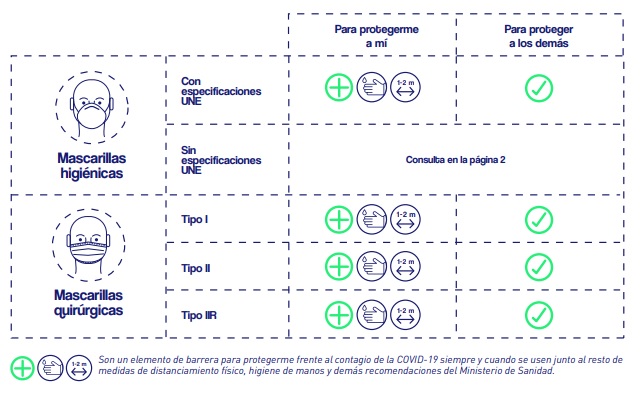
To know the differences between them, you have to understand what each type of mask is for. The hygiene measures are a complement to the social distancing and hygiene measures recommended by the Spanish health authorities. They cover the orifices of the face that can exhale particles, covering the mouth, nose and chin. Provided with rubber bands that surround the head or are attached to the ears and composed of one or several layers of textile material. They can be reusable or single use.
For their part, surgical masks are those that we are used to seeing in healthcare and clinical environments, given that their objective is to prevent healthcare personnel and patients who are infected with a contagious virus from transmitting particles that carry these infectious agents. These masks filter exhaled air and protect those around them, preventing viral dispersion when performing everyday actions such as sneezing or coughing. Like hygienic ones, they are fixed to the face and adjusted using rubber bands or other mechanisms.
In addition, there are other types of masks, which are Personal Protective Equipment (PPE) , recommended especially for professionals who have to work in front of the public, since they create a barrier between the potential risk for the user. Thus, they filter the air both from inside to outside, and from outside to inside, protecting those around us and ourselves. Its purpose, in fact, is to filter the inhaled air, preventing the entry of contaminating particles into our body. Depending on their effectiveness, they can be FFP1, FFP2 or FFP3.
Equivalence table for FFP2 - KN95 Masks of the European Regulations with the rest of the accepted technical specifications of other countries

As shown in the table, masks that are duly certified and meet the indicated health standards function in a very similar way, according to the performance requirements established in the standards and confirmed during tests to evaluate the quality and functionality of the masks.
On this basis of comparison, it is reasonable to consider that the Chinese KN95, AS / NZ P2, Korea 1st Class and Japan DS masks are equivalent elements to the US NIOSH N95 and European FFP2 respirators, to filter particles, droplets and splashes. , as well as for the prevention of the spread of viruses that may cause infection to third parties.
check_circle
check_circle


